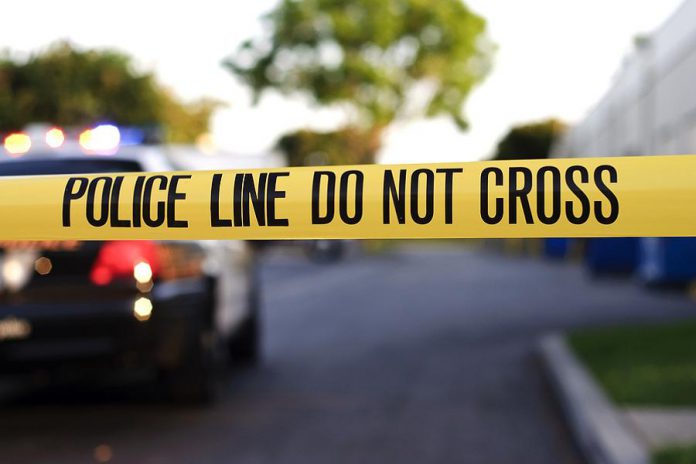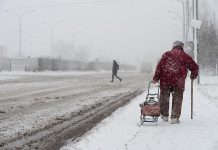
The advent of 24-hour news channels, cameras in every pocket, and social media has given virtually every person on earth the ability to consume, produce, and pontificate about everything from celebrities entering rehab to really important news — like last week’s shooting of Walter Scott in South Carolina.
This senseless murder may have taken place 1600 kilometres away from us, but its impact has resonated across the continent. The recorded video of the events of that day make me sick to my stomach. It shows one human being completely misusing his position of power to take another human’s life.
The issues in that case are plenty, starting with a white police officer pulling over a black man for having a supposedly non-functioning brake light. Then an officer using excessive force, taking a man’s life, and planting evidence. Then other white officers claiming to perform CPR on Mr. Scott, when they clearly did not.
This on the heels of the shooting of Michael Brown in Ferguson, Missouri, and many others just like it.
And now this week, video has surfaced of another black man killed while being arrested in Tulsa, Oklahoma. The man — 44-year-old Eric Courtney Harris — was shot by a 73-year-old volunteer deputy who allegedly mistook his handgun for his Taser.
While Mr. Harris was on the ground bleeding to death, another officer put his knee on the back of Mr. Harris’ neck. Mr. Harris tried to say that he couldn’t breathe, to which the officer responded “Fuck your breath.” Mr. Harris later died from his injuries.
Now let’s look at four examples of violent incidents involving police:
- Michael Brown (Ferguson, Missouri) – This unarmed 18-year-old black man stole several cigarillos from a convenience store. Brown got into an altercation with a 28-year-old white police officer who subsequently shot him to death, firing 12 times. According to some witnesses, Brown had surrendered before he was killed.
- Walter Scott (North Charleston, South Carolina) – This unarmed 50-year-old black man was pulled over for having a non-functioning brake light. Scott fled his vehicle for an unknown reason, and the police officer shot him with a Taser. When Scott got up and ran away again, the police officer pulled his handgun and fired eight shots at the fleeing man’s back, killing him.
- Eric Harris (Tulsa, Oklahoma) – This unarmed 44-year-old black man was attempting to evade arrest from his involvement in a undercover sting operation. While being arrested, Harris was shot by a volunteer deputy who claims he mistook his handgun for a Taser. Harris later died in hospital.
- James Eagan Holmes (Aurora, Colorado) – In 2012, this 25-year-old man set off tear gas grenades and shot into the audience at a movie theatre with three semi-automatic weapons, killing 12 and injuring 70. He was successfully arrested and taken into custody, where he currently awaits trial.
While this is a bit like comparing apples to oranges, it’s important to note that if — you didn’t already know — James Eagan Holmes is a white man.
The trouble is that these examples, and many others like them, highlight that — even though 50 years have passed since Dr. Martin Luther King Jr. marched in Selma, Alabama — racism is still rampant in America.
Racism isn’t only subject to those south of the border though — just ask our First Nations peoples. Our policing problems north of the border are different though. Where systemic racism may be taking lives in some communities in Canada, it’s simply ignoring lives lost in our indigenous communities.
All these examples tarnish a badge that should be worn with pride and integrity. They also fuel ignorance in the masses who generalize that, if some police officers are racist or corrupt, they all must be. People begin to look at the police as the enemy rather than an ally.
This ignorance is no different than when someone says that Muslims are terrorists. Clearly, Muslims are not terrorists: terrorists are terrorists.
The same is true when evaluating police — yes, there are some awful ones, but there are also countless others who bust their asses day in and day out keeping us safe.
Locally, we’ve had some pretty serious situations play out over the past few weeks that have fueled debates: the first being a man who took his own life in a Walmart parking lot, and the second being an incident where a man ended up dead after an altercation with a police officer.
Peterborough Police have taken heat on these issues for a number of reasons, and it highlights for me how the police have been under constant scrutiny for some time now.
Let’s begin last year, with the stand off on Braidwood Ave. in January. Police had a credible threat and dealt with it accordingly. They brought in support from Durham Region and a lot of officers put in overtime.
Thankfully, the situation was diffused after 15 hours and no one was hurt. But it only took a couple of days for the newspapers to point out how much money the situation cost the city, by breaking down police overtime hours and expenses.
People were outraged by the “gross misspending” and the police’s “overreaction” to the crisis — which leads me to ask how outraged people would have been if the police hadn’t reacted appropriately (out of concern for paying out overtime hours) and someone had been killed? I can already guess the answer to that question.
The police budget fires people up and, while I don’t support some of their budgetary expenses, I notice no one balks at the fire services budget that has seen significant salary increases over the last few years.
What makes me scratch my head even more is that some of the opponents of police budget increases are the same people who hop on social media after a criminal act has taken place to clamour for more police.
Most recently, things have been more serious than budgets.
A few weeks back a man barricaded himself in his vehicle with a sawed-off shotgun in the parking lot of the north end Walmart. Police were quick to react, reducing access to the area and making sure that people inside the nearby Walmart remained safe. Sadly, this situation ended with the man killing himself.
The reactions on social media were astounding. People were demanding more information as the situation was unfolding. From wanting to know the name of the suspect to wanting to know when people would be allowed to leave the Walmart, people were outraged that the Peterborough Police weren’t providing more information.
This is a negative byproduct of the 24-hour news cycle and social media. Fifteen years ago, the only updates would have been at the top of the hour on local news stations or on the 11 p.m. news. Now we’re demanding information after minutes — even if we’re not directly involved in the ongoing situation.
On April 5th, there was an altercation between a police officer and a man on Wolfe St. in Peterborough that resulted in the man being shot once and succumbing to his injuries. The officer was sent to hospital for treatment of his injuries, rumoured to be stab wounds.
In the days that followed, I saw people draw parallels to the well-publicized shootings in the U.S. and accuse police of not being able to deal with mental health issues effectively — opinions made in complete ignorance of what had happened. If it’s true that the officer was stabbed, then his pulling of his sidearm and shooting the suspect would be expected. You don’t take a knife to the leg and say, “Fiddle dee dee, let’s calm down and talk this out”.
Then, on April 8th, the Peterborough Police Service released the name and photo of a man, arrested and charged with sexual offences, who’s alleged to have had sex without disclosing that he was HIV positive. The police issued a “public safety message” in an effort to identify other potential victims, as the police believed that the accused had other sexual partners.
That day, I read a comment on social media from a person who was outraged that the police had released this information, but wouldn’t release the name of the officer involved in the Wolfe St. shooting. They went on to blame systemic racism in our community because the accused in the HIV case was a black man.
If this man had sex with one of my loved ones without disclosing that he had HIV, I think they deserve to know. If that man wasn’t cooperating with the police, the police would have no other choice but to appeal to the public to ensure public safety. This isn’t a case of racism — this is basic public safety. Comparing the two investigations is like comparing bricks and light poles: both things are hard, but they couldn’t be more different.
Clearly, there are examples worldwide of people in positions of power abusing that power. Clearly, the systems in place to regulate these people’s actions have not done what they were intended to do in many cases. Clearly, many of these situations have affected the way some members of the public view police.
But the reality is that not everything that happens is a cause for outrage. Sometimes people make bad decisions and break the law. Most of the time those people pay the consequences of their bad decisions.
The other reality is that, in the year 2015, civil rights issues are still alive and well — a fact that is truly disheartening. To change this requires the end of systemic racism that’s deeply rooted in centuries of discrimination. Frankly, I can’t even begin to fathom how it’ll be achieved in my lifetime.
I’m the first person to believe that skepticism is a healthy thing. It’s important to question those in authority; it keeps them on their toes and identifies corruption.
The thing is that, for one reason or another, some people’s skepticism has not only become selective — it’s moved on to become defamatory ignorance.


























